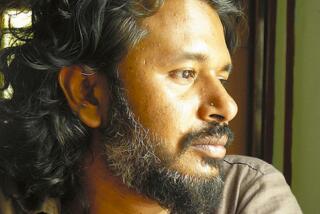Massacre That ‘Woke Everybody Up’ Helped Bring Truce in Sri Lanka
- Share via
COLOMBO, Sri Lanka — It was the most terrifying episode in the decade-long Tamil separatist conflict in this island nation. A small band of separatist guerrillas, disguised in government army uniforms, on May 14 descended on a sacred Buddhist city and indiscriminately killed 146 civilians, most of them Buddhist Sinhalese.
Public shock over the massacre in Anuradhapura, more than any other factor, led to the cease-fire announced here Tuesday between government forces and the main separatist guerrilla organizations, according to government officials, politicians and academicians interviewed here in the wake of the announcement.
“The Anuradhapura incident woke everybody up,” a senior Asian diplomat said. “They became conscious that the problems are not limited just to the north (where most of the island’s 2.7 million Tamils live). It can spread to the east and other parts of Sri Lanka. They learned that it is not something that can be solved by purely military means.”
The same view was expressed by Reggie Siriwardena, a Sinhalese sociologist and member of the Committee for National Development that produced a book on the ethnic conflict here.
Brought the War Home
“Public opinion has shifted. I think, in fact, it was Anuradhapura that changed the situation,” Siriwardena said of the guerrilla assault near a sacred 2,500-year-old bo tree, the Sri Maha Bodhiya, said to have been grown from a sapling of Buddha’s tree of divine enlightenment. “It brought home the war to the Sinhala people. It was horrible and indefensible, I agree. But at the same time it was no more horrible than the killing of Tamil civilians that has been going on for some time.”
The group that took responsibility for the massacre, the Liberation Tigers of Tamil Eelam, asserted that the 146 were killed as revenge for the killings of 70 Tamil civilians by government troops the week before in the northern coastal town of Velvettiturai. The government forces are almost all members of the Buddhist Sinhalese majority population on the island.
After Anuradhapura, even more Tamil civilians were killed, including nine who went to an army camp seeking refuge and were killed by an army corporal who kept shooting until he was killed by his commanding officer.
In the last year alone, more than 1,000 people have been killed in the ethnic battle between the predominantly Hindu Tamil population and the mainly Buddhist Sinhalese, who are the majority group on the 15 million-population island. The conflict between the two groups dates back to the early years of their 2,000-year coexistence here, but the move for a separate Tamil state, to be called Eelam, gained momentum only within the last 10 years after a major political party here adopted a Sinhalese nationalist platform.
Will Consider Autonomy
The separatist attack on Anuradhapura radically changed the political equation here, causing the Sri Lankan government of President Junius R. Jayewardene to ask India for help and opening the door to a possible political settlement.
For the first time, a senior government official said Thursday, the government will seriously consider granting some degree of regional autonomy to the Tamil areas, centered in the northern and eastern sections of the island.
Realistically, he said, it is the first time the Jayewardene government has had an opportunity to bend on the autonomy question because, before Anuradhapura, there was substantial public sentiment against any accommodation with the minority Tamils. Also, the opposition Sri Lanka Freedom Party, founded 30 years ago on Sinhalese chauvinist lines, was poised to jump on any government concessions to the Tamils.
Although the Sinhalese are the majority in Sri Lanka and dominate all political, military and educational institutions, many Sinhalese nevertheless see themselves as a minority because of the island’s proximity to the Indian state of Tamil Nadu, home of 50 million Indian Tamils with close religious (Hindu), linguistic and cultural ties to the Tamils here.
To placate Tamil political forces in India, India’s late Prime Minister Indira Gandhi never directly expressed her opposition to a Tamil separatist movement in Sri Lanka, thus exacerbating Sinhalese fears here.
However, Indira Gandhi’s successor--her son, Rajiv Gandhi--allayed some of the Sinhalese fears by declaring emphatically during a press conference with foreign reporters, “We will not allow Eelam,” thus ruling out a separate state for the Tamils.
A role for India as peacemaker in Sri Lanka has been encouraged by nearly everyone with interests here, including the United States. And since Rajiv Gandhi became prime minister after his mother was assassinated last October, Sri Lankans in and out of government have come to accept such Indian leadership.
“India’s role has been constructive,” sociologist Siriwardena said. “One of the realities of the geopolitical situation is that we cannot survive without India’s cooperation.”
A senior official in the Jayewardene government said, “There is widespread feeling that Rajiv has no personal animosity against the president and that he wants to help Sri Lanka.”
India put heavy pressure on the Tamil separatist groups, most of which have offices in the southern Indian city of Madras, to agree to the cease-fire.
“The militants agreed to a cease-fire in deference to Indian Prime Minister Rajiv Gandhi’s wishes,” Apapillai Amirthalingam, a Tamil United Liberation Front spokesman, said Thursday in Madras, according to Reuters news agency.
More to Read
Sign up for Essential California
The most important California stories and recommendations in your inbox every morning.
You may occasionally receive promotional content from the Los Angeles Times.













